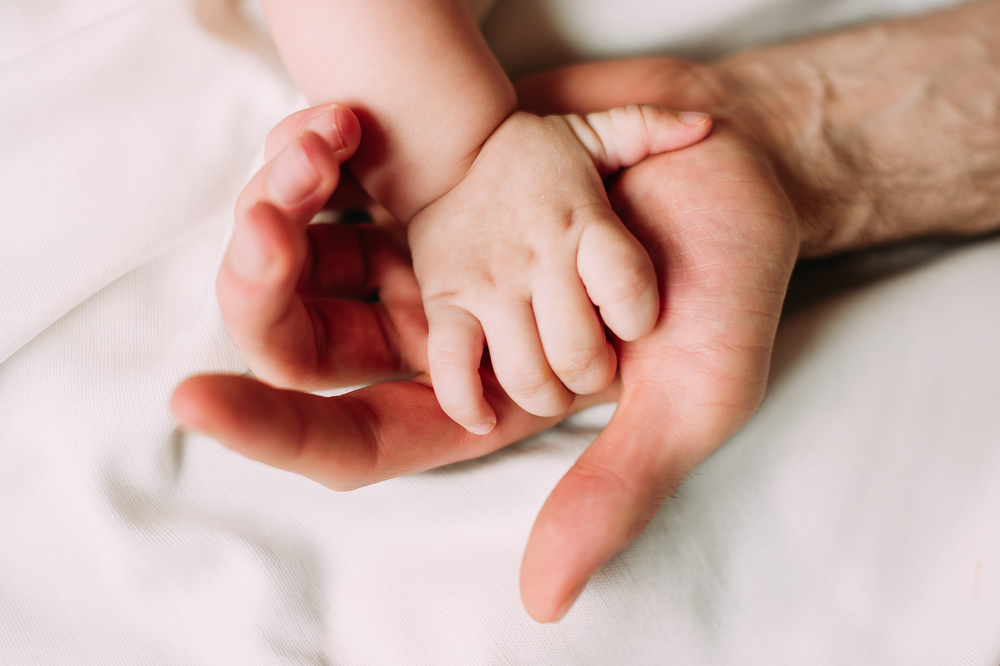New parents are no strangers to the fact that Dads have a huge impact on a child’s overall healthy development. However, they may be surprised as to how much of a lasting difference dads have on their children depending on the level of involvement.
Understanding the different attachment types that develop allow us to qualitatively compare various levels of involvement by a father figure.
Attachment is defined as a strong emotional connection, such as the bond between a child and caregiver. In psychology, the concept of attachment helps explain development and personality. John Bowlby, “the father of attachment theory,” believed that the tendency of infants to develop attachments to their caregivers is a result of evolutionary pressures – as attachment behavior could facilitate infant’s survival in the face of danger.

Copyright: g-stockstudio
His student, Mary Ainsworth, after observing behavioral patterns that are characteristic of the relationship between a child and caregiver, developed the 4 types of attachment:
- Secure
- Avoidant
- Ambivalent
- Disorganized
Secure Attachment
Secure attachment occurs in roughly 60% of the general population. At home, the parents are emotionally available, perceptive and respond to the infant’s needs and mental states. The infant expects that their needs will be known and met. Hence, infants raised with secure attachments are free to explore their environment in safety.
When amongst strangers, these infants use their caretaker as a base from which they may explore. If their caregiver leaves, the child would notice and would protest. When the caregiver returns, the child would make a beeline to the caregiver, and once reassured, return to back to curiosity driven exploration.

Copyright: Katya Shut
Avoidant Attachment
Avoidant attachment occurs in a household where the parents are emotionally unavailable, imperceptive, unresponsive and rejecting. Even in situations where parents are responsive in non-emotional interactions, but MIA when the infant is emotionally needy, frustrated or angry, avoidant attachment results.
Behaviorally these infants are more demanding, clingy and have bouts of random aggression. The thought process of an infant exhibiting avoidant behavior is, “my caregiver doesn’t respond to my emotions so I will shut down my needs and try to become independent.” This results in repressed emotions and avoiding the innate need for connections with people. When amongst strangers, the infant doesn’t use the caregiver as a secure base from which to explore. If the caregiver leaves or returns, the infant often acts as if the caregiver was never there.

Copyright: wavebreakmedia
Ambivalent Attachment
In ambivalent attachment, the caretakers are only sometimes available. Even when a mother or father is available, he or she is often preoccupied. Infants demonstrating ambivalent attachment are most anxious, clingy and demanding.
The thought process of such children is that they believe that even if their caretaker is available physically, they are not available on an emotional level. Hence, such infants will “over-activate” their attachment system. Amongst strangers, such children are always aware of the whereabouts of their caretaker even when playing. The children become upset with the caretaker leaves and extremely clingy when the caretaker returns. However, even upon the return of the caretaker, the infant is not soothed.

Copyright: Dina Uretski
Disorganized Attachment
Lastly disorganized attachment occurs in families that have a history of physical/sexual abuse, substance abuse, or psychologically disturbed parents. Presence of the caretaker has a mixed response as the child feels both a sense of soothing and a sense of danger. In the presence of strangers, children with disorganized attachment often freeze up and exhibit disorganized behavior.
Techniques a Father Can Employ in Order to Foster Secure Attachment

Copyright: Dasha Muller
With knowledge of Ainsworth’s attachment types, we understand that a father should strive to establish secure attachment with his child. This is the only type of attachment that a child can depend upon and could serve as a springboard for proper development and maintenance of a high quality of health. However, what techniques could a father employ in order to foster secure attachment?
- Daily Care: All infants need daily care. From feeding, to bathing, to burping. It is a common misconception that these are duties of the mother. Research has shown that children with fathers who are involved in daily care grow up to be more confident and enjoy stronger social connections with their peers
- Play: The rough-and-tumble style of play that fathers engage in with young children is actually encouraged as it helps children regulate their feelings and behavior. Such fun, “play wrestling,” actually teaches children the socially acceptable ways to deal with aggressive impulses and physical contact. Research also shows that this activity helps children learn where the boundaries of safety and risk-taking exist in the world. Fathers are also encouraged in stimulating play with their child through sharing stories or playing pretend. There is a positive correlation between fathers that engage in this type of behavior and higher math and reading scores for their children once schooling begins.
- Fostering Emotional Intelligence: Children more involved with their fathers, are often more patient. When these children get older they are able to better handle stresses and frustrations associated with school compared to children with less involved fathers. Such children, that are a product of secure attachments, also have a lower incidence of depression.

















